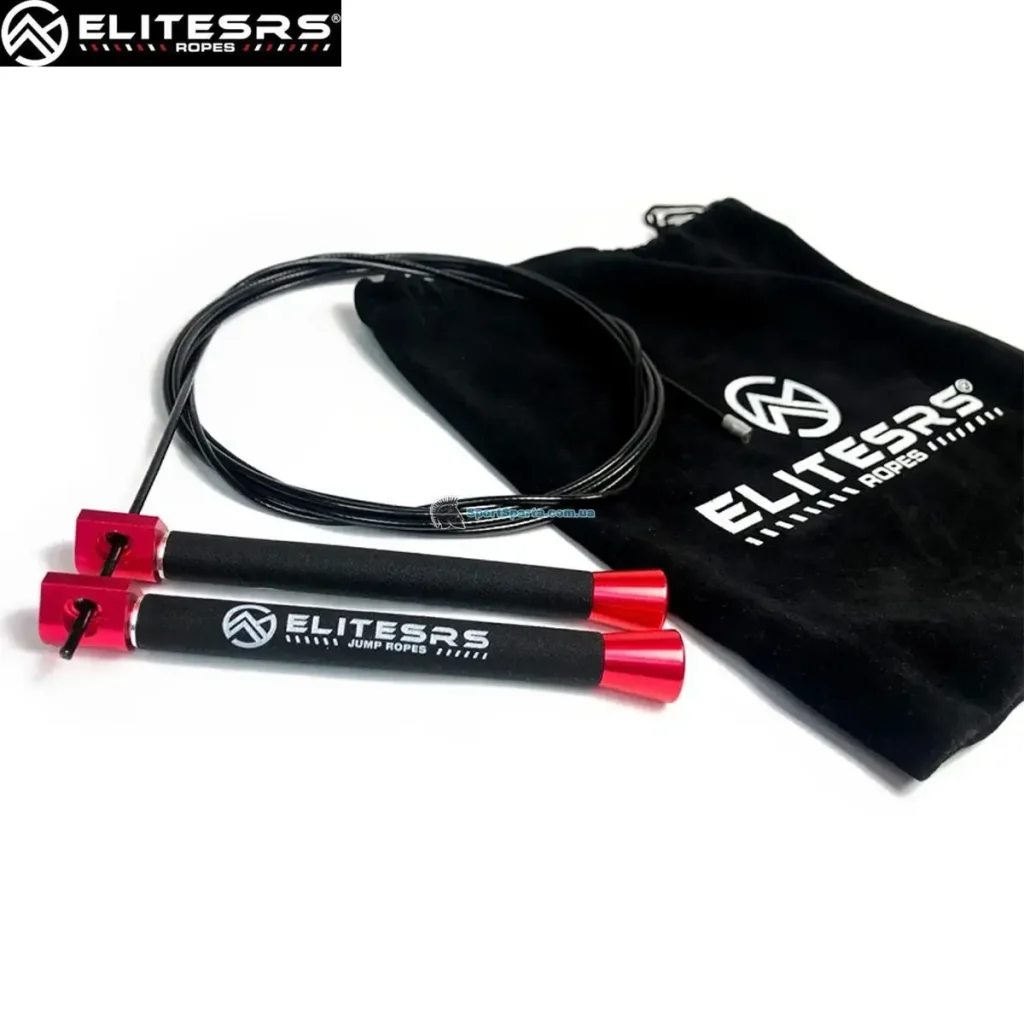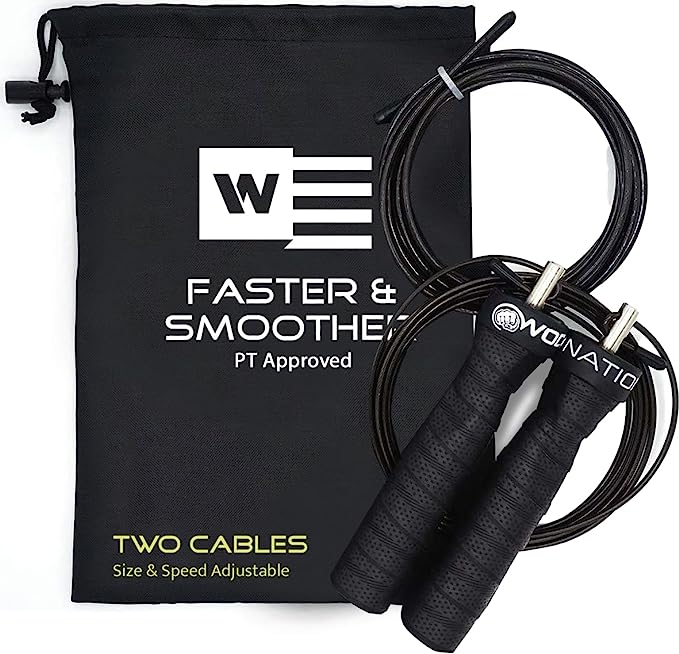Jump Rope Vs Speed Rope: In-Depth Look
Author:
Unlock your full potential by engaging with our experts and community! Have questions about your fitness journey or looking for expert advice on weightlifting techniques? Don’t hesitate — leave a comment below and Ihor Shymechko will provide a personalized answer and insights to help you reach your goals.
Torokhtiy is reader-supported. Some links are affiliate links, and we may earn a commission at no extra cost to you. See our disclosure page for details.
Jump rope vs speed rope: Which one is better? What purpose is each used? Who uses these ropes? How to use a speed rope or jump rope? When to use each rope? These questions, plus the pros and cons of each of the ropes, are addressed thoroughly in the article.
A jump rope is more suitable for all levels of individuals, while a speed rope is more complicated and requires expertise and experience. A speed rope also trains endurance and explosiveness better. However, a jump rope is more portable, but a speed rope is made of higher quality material.
What is A Jump Rope?
A jump rope is a cost efficient and space friendly cardiovascular exercise equipment. It’s typically made of PVC cord or nylon and comes in various adjustable sizes. A jump rope can be used by a wide range of people. The two most common uses of it are to increase your athleticism and to lose weight. So, if you’re someone looking to work on your balance and agility, jump rope exercises are a great way to train. While, if you’re wanting to lose some weight, a jump rope is often considered a more time efficient cardio workout as it burns more calories in a short period of time.
But, jump rope has other uses as well. One being that it’s great for addressing smaller areas like foot strength, ankle strength, calf muscles, and tendon work, so if you’re someone looking to address these muscular imbalances or build up muscle and strength in joints, muscles, and tendon in the lower half of your legs.
You can perform a jump rope workout in various ways as well. If you’re looking to do an intensive and long workout, it might be best to do it on a day where you’re not lifting weights. However, a jump rope can also be used as a warm up, as it will get the blood flowing and work your entire body, so you can do a light 5 to 10 minute workout prior to lifting weights. It can also be used during active recovery days, where you’re assisting your recovery by moving your body and getting the blood flowing.
Pros of Jump Rope:
- Helps with weight loss
- Very space efficient and cheap cardio equipment
- Helps work smaller muscle, tendon, joint groups
- Can get a great workout in a short amount of time
Cons of Jump Rope:
- Harder to progress with double unders and other speed rope exercises
- Can be tricky to make progress long term
our recommended Jump Rope
For us, the best jump rope is the Elite SRS Surge 3.0. The Elite SRS is made of lightweight aluminum material, which makes it easier for you to get into a jumping rhythm, especially because the design creates this whipping sound when you nail the swing perfectly, so you know what to hear for when you’re working out.
The rope can be easily adjusted, so someone up to 6’5 can use it and comes with a kink resistant cable, so you don’t have to worry about the rope tangling up. It also can be used to perform double unders effectively because of its unique design and features.
What is A Speed Rope?
An easy way to think about a speed rope is that it’s the next level to a jump rope. A speed rope, like its name, is meant to be used for speed work as the cables are extremely light weight and usually made of thin vinyl cords, which makes it easier to increase the speed of your workout routine.
A speed rope is best used by either athletes or an experienced jump roper. As mentioned above, a speed rope really works best when you do it quickly. That’s the whole purpose of this equipment, so there is a competitive nature to speed ropes that works for athletes. Speed rope is common in sports like fitness and is used by other athletes to improve their cardio and explosive power.
However, you don’t just have to be an athlete to use a speed rope. If you have a lot of experience with using a jump rope, it can be good progress to move onto a speed rope as it will present you with a new challenge. The reason you want some experience is that a speed rope is naturally quicker, so to get the jump timing right and to get the most out of a speed rope, you should already have tons of practice.
Pros:
- Easy to align cause of the numbers on the straps
- Door attachment included
- Strong sewn stitches because of double stitching process during manufacturing
Cons:
- Less load capacity than some of the other products on our list
our recommended Speed Rope
The WOD Nation Speed Jump Rope is the best for this type of workout. The WOD Nation rope is specially designed to be thin and stable at the same time, so it’s easier for you to build a rhythm while skipping rope. Its handles are also lightweight and come with metal ball bearings, so the twist of the rope is smooth and seamless.
While the rope itself is made of coated steel cable that works well for single jumps and double unders along with various other skipping techniques. The product also comes with extra replacement cables in case the original ones get damaged.
Speed Rope Vs Jump Rope: Main Differences
Price
Apart from some of the obvious differences mentioned above, such as shape and lightness, one thing that separates speed ropes and jump ropes is the price. Typically, a jump rope is cheaper because of the quality of the material used for it. While a speed rope requires more attention to detail, different types of quality, and usually patented design. All of this adds to a more expensive product, but there are definitely budget friendly options out there too for speed ropes.
Ability
Ability is a key difference. A jump rope can be used by a wide variety of individuals and especially beginners who are learning how not only to jump rope, but perhaps even working on the fundamentals of balance and single leg work.
However, a speed rope isn’t the equipment for people who are still at the bare bone level of coordination, balance, and agility. You should be an intermediate to an expert in jump rope before trying your hand with a speed rope.

Portability
A jump rope is more likely to be used for several different types of surfaces and environments. You could possibly use a jump rope at home and then take it on a harsher surface, like concrete, and it will still be durable enough.
But because of the materials used and thinness of a speed rope, it’s highly recommended that you don’t use them on harsher surfaces, as that will result in the rope breaking down much quicker.
Material Quality
The material used for each rope differs as well. A jump rope isn’t too concerned about being lightweight and thin, so it uses materials like nylon, aluminum, and PVC cord, which can be more durable. But with a speed rope, because you want a rope that is extremely thin and lightweight, the rope uses material like steel cables and vinyl cords to achieve these specific purposes.
FAQ
Is Speed Rope the Same as Jump Rope?
A speed rope is not the same as a regular jump rope despite looking similar. A speed rope is thinner, made of different types of materials, and used more often by athletes or advanced jump ropers. Speed work targets endurance and explosiveness better than a jump rope and usually is better for exercises like double unders as well because of the lightweight nature of a speed rope.
Do Boxers Use Speed Rope or Jump Rope?
It depends on the boxer’s training purpose. Often boxers warm up with a jump rope for about 10 to 20 minutes before their training session. However, when a boxer is working on explosiveness and speed, it’s not uncommon for them to use a lightweight speed rope for these purposes.
So, overall, you’ll see a boxer using a jump rope more regularly, while a speed rope works best for specific training blocks.
Conclusion
For skipping rope vs jumping rope, you should take into consideration your ability and experience along with the purpose of your training. Each rope has its benefits and setbacks, but both will give you a great workout and get you into great shape.
What are the biggest differences you feel when using a speed rope and jump rope? Which type of rope do you prefer for your everyday workout? What’s your favourite workout routine or exercises to do with a jump rope or speed rope?
Let’s discuss all of this and any other questions you might have in the comment section below!
Also read:
- Single Unders
- Weighted Jump Rope Benefits
- Functional Fitness Jump Rope Workout
- How Long Should A Jump Rope Be
- How To Do Double Unders
- Types Of Jump Ropes Best
- Functional Fitness Jump Rope
- Jump Rope vs Speed Rope
- Jump Rope Guide
References:
- Jump Rope Training // BodyBuilding: https://www.bodybuilding.com/fun/rossboxing4.htm
- 10 Jump Rope Benefits: The Unique Results of Jump Rope Training // Crossrope: https://www.crossrope.com/blogs/blog/jump-rope-benefits/
Why Trust Us?
With over 20 years in Olympic weightlifting, strength training, nutrition coaching, and general fitness our team does its best to provide the audience with ultimate support and meet the needs and requirements of advanced athletes and professional lifters, as well as people who strive to open new opportunities and develop their physical capabilities with us.
By trusting the recommendations of our certified experts in coaching, nutrition, and sports training programming, as well as scientific consultants, and physiotherapists, we provide you with thorough, well-considered, and scientifically proven content. All the information given in the articles concerning workout programming, separate exercises, and athletic performance, in general, is based on verified data.
The product testing process is described in more detail here.
Author: Ihor Shymechko
Pro Olympic Weightlifter, Coach
Best Results: Snatch – 208 kg,
C&J – 240 kg
Ihor has been a professional weightlifter since 1996, boasting over two decades of competition experience. His notable achievements include clinching the European Championship in 2009 and securing a silver medal in the 105kg division at the Senior World Championships in 2011. Ihor represented his country in the 2008, 2012, and 2016 Summer Olympics. After retiring from competitive weightlifting, he transitioned to coaching, leveraging his vast experience to guide athletes who now compete on both national and international stages.





Still have questions after reading our article? Unlock your full potential by engaging with our experts and community! Don’t hesitate — leave a comment below and Ihor Shymechko will provide a personalized answer and insights to help you reach your goals.